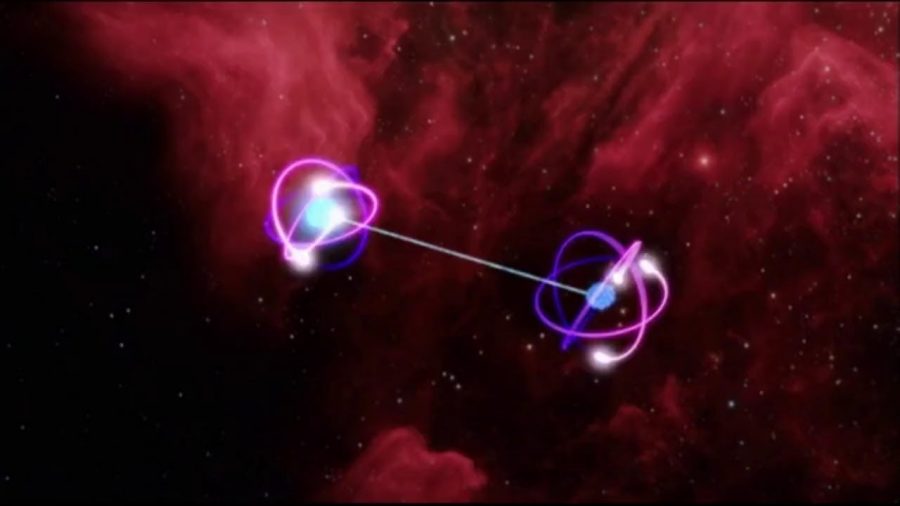One Physics Teacher and Her Quest to Unlock Quantum Entanglement
Physicists have been trying since the days of Einstein to solve the seemingly impossible problem of exactly why light acts like a particle and a wave at the same time. A new addition to the Albany High School physics department, Mrs. Emily Nagle, thinks she might have the answer to this curious conundrum.
Quantum Entanglement, or the aforementioned problem, is an up-to-now inexplicable issue, one that Albert Einstein himself referred to as “spooky action at a distance”. In the past, particle accelerators have shown that light particles communicate about or above 10,000 times the speed of light. That’s seven trillion miles per hour. These sub-atomic, unexplored pieces of nature can send messages to each other to either become a particle or a wave, and it happens way too fast for anyone to understand it. It’s been suggested by renowned scientists like Bohr and Schrödinger that any given light particle is predisposed to be either a particle or a wave but not until you check it; in simpler words, it’s both at the same time. No one knows for sure though.
Mrs. Nagle said that she is trying to solve this issue. “I’ve come up with some thoughts [but] I can’t reveal too much”, she said. Secrecy is very important because, with an original idea, Mrs. Nagle would be competing with the world’s greatest minds, many of whom spend full days working on this problem. “Weird things happen on a molecular level,” she explained. “I’m trying to apply Einstein’s theory of time and space distortions to the Quantum Entanglement theory”. The referenced theory states that there is a warping in time and space, called “time dilation”, which is already being applied regularly in GPS systems. “There’s probably other people who thought of this,” Mrs. Nagle said. “But I’m thinking outside of the Schrödinger’s Box. If it just took brains to come up with this solution, we would have got it already. I may not be the sharpest tool in the shed [when it comes to quantum entanglement], but my crazy ideas might do it.”
AHS students were unsurprised but pleased to hear about their physic teacher’s adventures. “She has an eccentric personality,” said Mary Cabuhat, a tenth grade student of hers. “But I think that it’s a very interesting thing to embark on; […] it’s very impressive”. Robert Baestline, a junior at Albany High, whistled lowly in appreciation. “She has a lot of work ethic to try and solve something [supposedly] impossible”, he said.
This may be a shot in the dark. However, Mrs. Nagle also has a credible chance of making an impact on this field of study. “I’ve been working on this for about three years and I’ve come up with some thoughts,” Mrs. Nagle affirmed. “I hope it pans out”. If it does succeed, Mrs. Nagle will surely be the laureate of several prestigious awards. If not, it’s a fun hobby. How will it all end? I guess it’s predisposed to be either until we find out…


